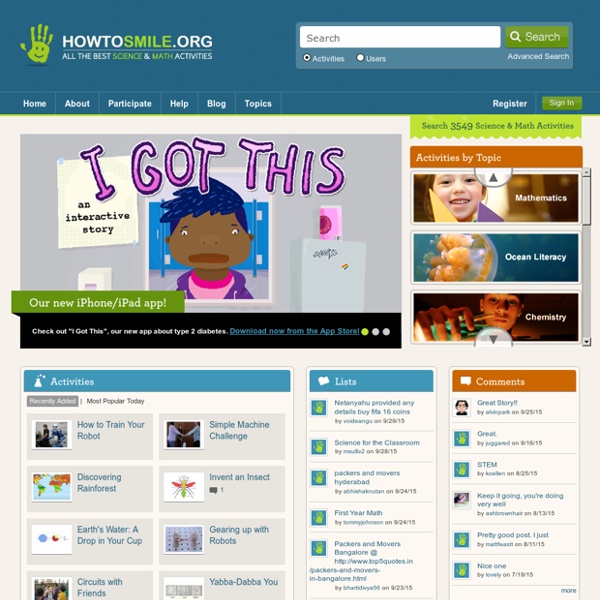Institute of Scrap Recycling Industries, Inc.
ISRI and JASON are proud to partner on a national recycling awareness campaign to help students and educators understand the importance of recycling and the recycling industry, as well as the science, technology, engineering, and math (STEM) topics that relate to recycling. The campaign includes rich, standards-based, multimedia curricular experiences for students in grades K–12, to be composed of the following elements: an annual recycling competition, interactive Web-based experiences to enhance student engagement, classroom posters featuring ISRI’s key educational messages, age-appropriate hands-on activities for students in three grade bands from kindergarten through high school, fact sheets, live events with STEM role models, a national distribution network, strategies for school visits to ISRI facilities, and more. Visit isri.org (link is external) or watch this video (link is external) to learn more about the recycling industry.
Classroom Guide
We want to help you bring DIY to your classroom. DIY is a platform for students to discover Skills and share what they make and do with a global community. Educators everywhere are using DIY to explore skill-based learning and introduce collaboration into their classroom – during homeroom, Genius Hour, after school, and even regular classes. Blend the DIY Skills platform into your core curriculum, or let your students explore new subjects while practicing skills. Register
Math Techniques and Strategies: From STEM to STEAM: The Arts and Creativity in Math
I believe that great math teachers bring creativity in to their classroom. It doesn't have to be a lot, but it needs to have creativity and imagination in the classroom. Math is about creativity and concepts people thought of using their imagination. Which is why there is a large push now from STEM (Science, Technology, Engineering, and Mathematics) to STEAM (includes the arts).
YouAreHere - where kids learn to be smarter consumers!
In our virtual mall, you can play games, design ads, chat with customers and store owners, and much more. You’ll learn key consumer concepts, such as how advertising affects you, how you benefit when businesses compete, how (and why) to protect your information, and how to spot scams. What better place to do it than at the mall!
Maker Space In Education Series… 20 Reasons Your Students Should Be Making
It’s still summer time in the States and I couldn’t help but think of the idea of play, and that of course made me think of Maker Space. I have long encourage Making in the classroom. It wasn’t until recently that I discovered that this idea is now a movement and one that I suggest all 21st century educators Make some room for. I hope you enjoy this series and I encourage you to send me information and resources, as I am also Making time to learn.
Elementary Nutrition Education - Childhood Health, Obesity Prevention, Nutrition Tools for Teachers, Elementary Schools, Parents Involvement, School- Home Partnerships
Welcome Health & Nutrition Providers and Professional Educators Nourish Interactive is a completely free, English and Spanish website that provides nutrition educators and healthcare providers with a variety of interactive nutrition tools to assist you in teaching the key elements of nutrition to children and parents. We designed the website so that the parents’ webpages and nutrition tools complement the children’s games and nutritional messages.
Creating School Library Makerspaces
While there is no clear, single definition to the term makerspaces (Burke, 2013; Fontichiaro, as cited in Bell, 2015), there are commonalities existing in terms of features, functions, goals and activities that makerspaces provide. A makerspace is a place where people gather as communities to be innovative, create and collaborate, to share knowledge, tools and resources (Britton, 2012). Makerspaces have transpired from the maker movement which has been popularised by Make magazine and Maker Faire founder Dale Dougherty. These creative spaces emphasise the ‘do-it-yourself’ philosophy while promoting a richer engagement and curiosity within the Science, Technology, Engineering, Arts and Maths (STEAM) disciplines (Dougherty, 2013) and encourages students to pursue careers in these fields, but also to create their own jobs and industries (Peppler and Bender, 2013) that may not exist yet in a rapidly changing information and technological world.
The Complete Guide To Twitter Hashtags For Education
What is a hashtag? A word or phrase preceded by a “#.” How do hashtags work?
Our Makerspace Journey
The Stewart Middle Magnet School Library Makerspace Journey I first started my makerspace journey at Stewart Middle Magnet School in January 2014 with a few bins of K’nex spread out on some library tables. It then grew and expanded into a thriving program and a vital part of the library and school. Take a look back at our journey and see what we learned along the way. The Makerspace changed, grew and evolved since it was first conceived and started in January 2014.
Education
ThingLink for teachers and schools Create visual experiences for student-centered learning Start now Trusted Partners
Exploring Makerspace culture
It’s twelve months since Kristen Fontichiaro presented Sharpening our toolkit: defining great work, exploring Makerspace culture and badging accomplishments at the SLAV Conference Transliteracy: whom do you ask and how can you participate? At that time Kristen spoke of the value of Makerspaces as positive learning opportunities based on her experience and research with the Michigan Makers group and the University of Michigan, USA. A number of schools have explored the idea and are implementing them in various ways. As a ‘third space’ in a student’s life – a place that is neither home and nor the classroom, libraries and the concept of a Makerspace is an ideal fit. Every school has a unique ‘maker’ identity according to the interests and resources available to that community.


